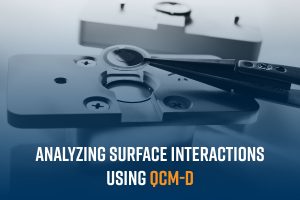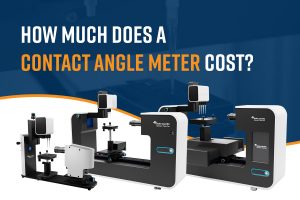Electrochemical Impedance Spectroscopy (EIS) is a powerful, non-destructive electrochemical technique used to probe electrochemical reactions by applying a small, alternating sinusoidal voltage to the device under test and measuring the resulting current. It measures the impedance of a system over a range of frequencies to provide detailed information about various physical and chemical processes occurring within the system. The ratio and time-dependent position of the voltage and current at a range of frequencies yield an impedance spectrum.
Electrochemical impedance spectroscopy (EIS) has become an indispensable testing technique in evaluating the performance and efficiency of batteries and fuel cells by analyzing charge transfer processes, diffusion, and resistive losses 1. It helps in understanding the degradation mechanisms and lifespan of electrochemical cells by identifying changes in impedance over time. EIS information can be used to predict the state of charge and state of health of a battery. Its incorporation into a comprehensive testing protocol has become imperative for a complete understanding of battery performance specifications. EIS can also be useful in measuring the rate of corrosion, characterizing and optimizing the sensitivity of electrochemical sensors, controlling and optimizing electroplating processes and measuring dielectric properties of materials.

Measuring EIS
The most common way to measure impedance spectroscopy is to use a potentiostat, a device that controls the voltage or current applied to an electrochemical cell in conjunction with an external frequency response analyzer (FRA) to generate the AC signal at different frequencies and analyze the system’s response. This setup allows for the measurement of a single device at a time.
There are systems available that control multiple test devices at a time and offer impedance measurements with a single impedance analyzer. One of the limitations of this setup is that only one channel can be tested at a time, leaving the other channels “waiting” for an impedance test. Aa an example, a battery cycler with many channels requires the EIS measurement capability to be available at the appropriate time to perform the EIS test. If there is any delay in taking the measurement due to use on another channel, this can lead to different testing conditions for different channels making the results more difficult to interpret.
Measuring multiple channels is achieved by integration with a multiplexer or switchbox. Connection between the EIS testing instrument and the selected channel on the battery cycler requires lengthy cable connections and complicated switching arrangements. These extra cables and connection devices can degrade the applied and measured signals limiting the frequency and impedance range that can be measured. Artifacts may also be introduced that do not relate to the characteristics of the measured battery.
It can also add complexity of handling different hardware devices controlled by separate software making the system more complicated to operate. Typically, the battery cycler and the EIS testing instrument run on different software platforms, which requires sophisticated integration between the two to insure the best results. This can be complicated, leading to problems with measurements. Alternatively, it may require running two independent software programs at the same time on a single computer without any software integration.
EIS Capability on Every Channel
An alternative to using a multiplexer or switchbox is to have EIS capability available on every channel. This capability has several advantages including:
Increased Efficiency and Throughput:
Measuring EIS on multiple channels simultaneously increases the efficiency and throughput of experiments. This is particularly beneficial in research and industrial settings where time and productivity are critical. Electrochemical impedance spectroscopy offers an information-rich result on a relatively short timescale, making it ideal for rapid screening of batteries.
Consistent Experimental Conditions:
Conducting EIS measurements on all channels at the same time ensures that all experiments are performed under identical conditions, minimizing variability. Synchronized measurements help in obtaining more reliable and consistent data, which is crucial for comparative studies and reproducibility.
Comparative Analysis:
Researchers can compare different materials or samples under identical conditions, facilitating direct comparative analysis. In corrosion studies, measuring EIS on multiple channels allows for the study of localized corrosion phenomena. Different areas of a sample can be investigated simultaneously to understand spatial variations in corrosion behavior. In sensor arrays, EIS measurements on each channel can enable the detection of multiple analytes simultaneously, enhancing the functionality and versatility of sensor systems. In battery packs and fuel cell stacks, measuring EIS on each cell or unit can identify cell-to-cell variability, helping in diagnosing performance issues and ensuring uniform quality.
Data Quality and Reliability:
Measuring EIS on multiple channels simultaneously allows for redundancy. Cross-verifying data from different channels enhances the reliability and quality of the results. Collecting more data points from multiple channels improves statistical robustness, leading to more accurate and credible conclusions. From a data accuracy perspective, embedded EIS reduces the distance for signals to travel from the device under test to the acquisition electronics. This prevents corruption of the data signals leading to greater data integrity, yielding accurate and precise results. Access to EIS on every channel improves the efficiency of battery tests enhancing the overall integrity of data.
Flexibility in Experimental Design:
The ability to measure EIS on each channel provides greater flexibility in experimental design. Complex experiments involving multiple variables can be conducted more effectively. Researchers can adapt their setups easily to different experimental needs, whether it’s studying a single sample in depth or comparing multiple samples simultaneously.
Conclusion
Battery Cyclers that incorporate simultaneous EIS capabilities on every channel offer on-demand, time saving experimentation with non-destructive measurements. The embedded EIS hardware yields more accurate and higher frequency results due to reduced cable length and less complicated signal path compared to a multiplexed system.








